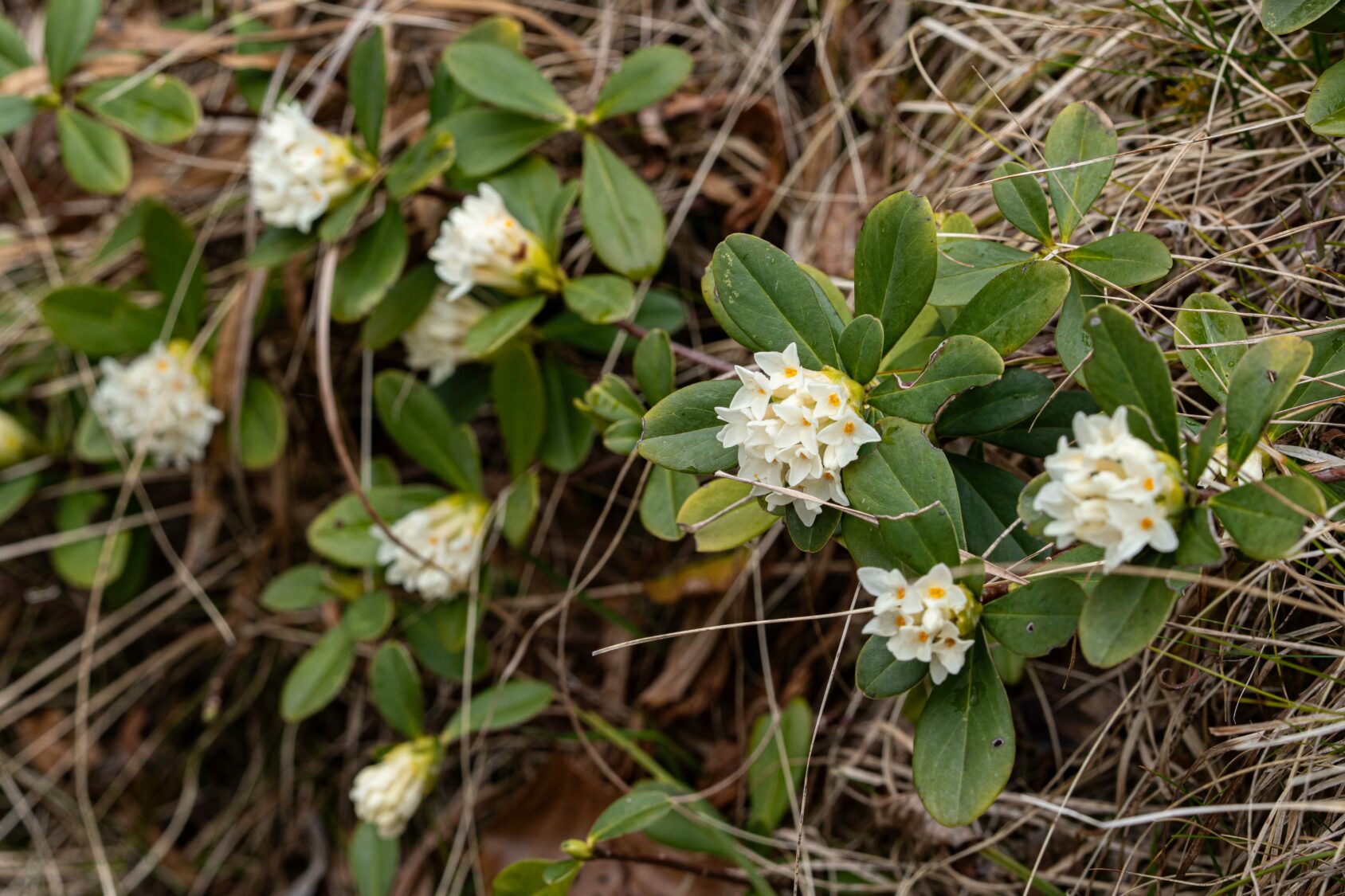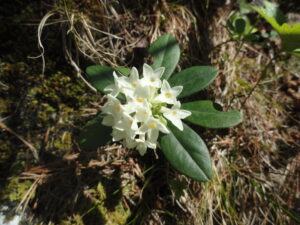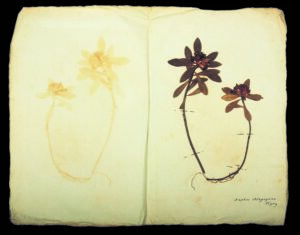By the water trough, we find small, prostrate, shrublets with evergreen leaves. The Blagay’s Daphne (Daphne blagayana) blooms in the spring, and its pale yellow blossoms have an intoxicating scent. Of all the plants in Slovenia, this one has undoubtedly received the most attention in writing. On May 22, 1837, a farmer brought a small branch of yellow daphne from Gora to the Earl of Polhov Gradec, Rihard Ursini.
Henrik Freyer (1802-1866), then curator of the Carnelian Regional Museum, described the daphne as a new species and named it Daphne blagayana after the earl. On May 14, 1938, the Saxony king Frederik Avgust II, more interested in botany than his royal duties, came to see the pretty pale daphne and even climbed onto Gora above Polhov Gradec. In the autumn of the same year, Blagay erected a unique monument that still today reminds us of the lofty royal visit. Hence also the Slovene name of the “king’s flower”.
At the time the discovery of this new species aroused great interest among botanists in Europe, as for almost twenty years no additional growth sites were known. Only later was it determined that the Blagay’s daphne extends throughout dry pine tree forests in Croatia, Bosnia and Herzegovina, Serbia, Montenegro, Albania, Macedonia, Bulgaria, Greece, and the Carpathian Mountains. The plant represents a true Illyrian-Carpathian species.
A few years ago its northwesternmost growth site was found in the foothills of the Carnic Alps in Italy. In Slovenia, it grows in the Trebuša Valley, in the Polhograjski Dolomiti, along the lower branch of the Sava River, in Kozjansko, and along the Kolpa River.


